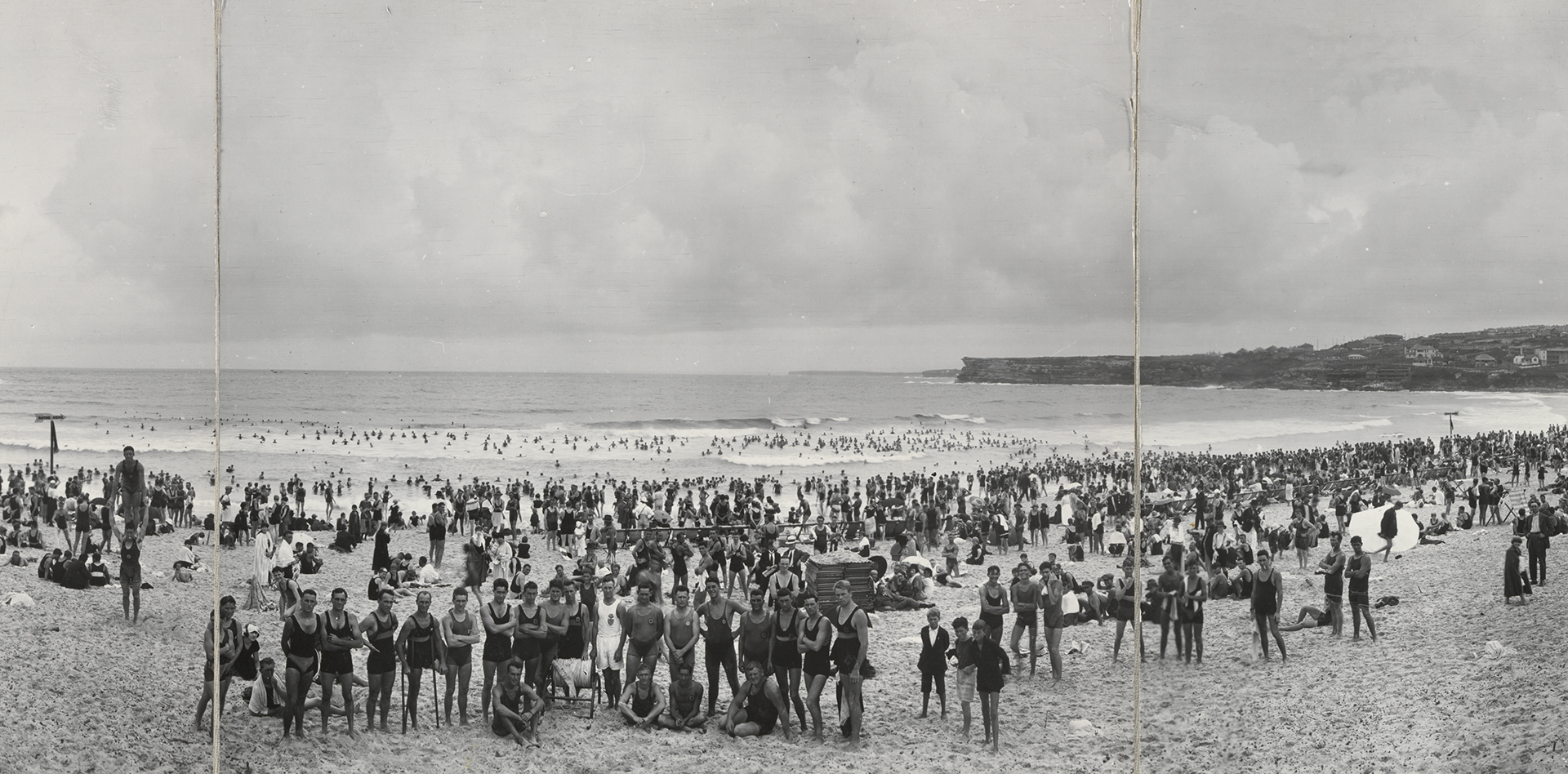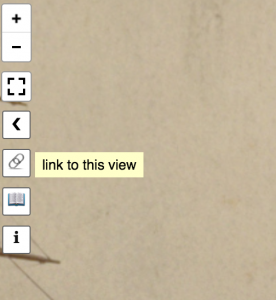
Pano-scope
“For most of the nineteenth century, panoramic photographers resorted to joining a series of images together and mounting them on linen backing. Some were very successful and Charles Bayliss’s famous 1875 panorama of Sydney, taken from the tower of Holtermann’s residence in North Sydney, was the pinnacle of large-scale vistas in Australia. Made from a series of twenty-three wet-plate negatives measuring 56 by 46 centimetres many of which were duplicated four or more times to obtain the best image -the finished panorama was nearly ten metres long.” – An Eye For Photography, Alan Davies, State Library of New South Wales, Megunyah Press, 2004
With the current technology trend of 360 video and photography being produced and shared today we were wondering what these early photographic panoramas would look like in a similar viewing experience. So we decided to build Pano-scope , the DX Lab’s latest experiment that allows you to explore, in detail, some of the awesome panoramas in the Library’s collection. We are launching this viewer with a sample set of 52 panoramas but we will load more in the future. This viewing experience (it’s not quite 360 but rather more like 120) allows you to see details in each of the panoramas that you would miss with a traditional viewer.
‘In the absence of a specialised wide-angle camera, the earliest photographic panoramas were produced by rotating a standard camera through a horizontal arc and taking a series of consecutive exposures. The images were then aligned and joined in sequence. Although the process seems simple today, it was an intricate feat for nineteenth-century photographers: making a uniform series of individually processed wet-plate negatives, all exhibiting the same density and contrast, was no easy task. The first paper panorama taken in Australia was a five-part view of Hobart. nearly a metre long, taken by John Sharp and Frederick Frith, using the wet-plate process, in late 1855 or early 1856.’ An Eye For Photography, Alan Davies, State Library of New South Wales, Megunyah Press, 2004

Technical stuff- Luke Dearnley, DX Lab Developer.
This whole project started very simply but grew very quickly. We came across a panoramic image in the Library’s collection and whilst we could not view it in much detail in the Library’s catalogue despite its high resolution, I decided to put the full sized image into the first decent looking panorama viewer I could find in 60 seconds of Googling.
I quickly found Pannellum which is a lightweight, free and open source panorama viewer for the web. A few minutes later I was able to view the panoramic image in all its glory, zooming in on details everywhere. Testing it out at scale we projected the image on the wall in the DX Lab and soon had staff coming over and steering round the image, discussing which headland was which, where the Harbour Bridge would later be built and so on.
So it certainly seemed that being able to view the panoramas in this way is indeed significantly more engaging. Before I knew it a shared spreadsheet of panoramic items from the collection was being contributed to by curators and other staff so I needed to expand my quick experiment into something a bit more fleshed out.
Pannellum is a Javascript library that uses WebGL and CSS 3D based renderers to do its magic. Each panorama that you set it up for needs to have a variety of parameters set. Some of these are dictated by the field of view that the panorama represents. For example if the panorama has a 114 degree horizontal field of view then that is one value and the vertical field of view can be determined from the ratio of the image height and image width, multiplied by the horizontal field of view. EG for 10,000px wide, 2,000px tall, 114 degrees horizontally we get: 2000/10000*114 = 22.8 degree vertical field of view.
Other parameters determine the limit of how far you can zoom in and out and how far you can steer around as well as a bunch of initial settings (position, zoom level). We only know how many degrees (horizontally) that the panoramas represent in some cases, either because they have it written on them, or because the type of camera that was used has a fixed scope. In other cases we can guess it, particularly where they are composed of several ‘standard’ images and then joined into a panorama. In the remainder of cases I simply guessed and played around with the figures until it stopped looking weird (some may still need a bit of work!).
Apart from being able to click and drag to navigate around, Pannellum also lets you steer using the cursor keys and zoom in and out with the shift and control keys, which is really fun! I actually had to restrain myself from spending too long ‘testing’ each new image I added to the site as roving round the image exploring all the hidden gems was endlessly fun. I added some extra buttons below Pannellum’s default zoom and full-screen buttons; one which links out to the collection record as well as one that reveals a link to the exact spot you have steered and zoomed to, allowing people to share the details they find in the panoramas.
As this was done as a quick experiment to find better ways to view panoramic images in the collection there are limitations and room for improvement. The quickest way to get Pannellum going is with a single big image but browser limitations mean these can be no larger than 16,384 pixels wide on a desktop and 4,096 pixels wide for phones and tablets. Some of the panoramas in the collection are 25,000 pixels wide, so we are losing some detail using the single-big-image set up, as opposed to the multi-resolution format option. The earlier ones I created from the master TIF images were only ‘high’ quality JPGs, rather than full quality, meaning some artefacts are evident in some images at the high zoom levels.
In the event that this panorama viewer goes from an experiment to something more, I’m sure we can overcome these limitations with the refinement of Pano-scope. We hope you enjoy finding the interesting details from each panorama and don’t forget you can use the link tool to share any detail of each image on social media. #panoscope #dxlab. Let us know what you find.
If you would like to download any of these panoramas as high-resolution images then we have created a Panorama set in Flickr for you.


